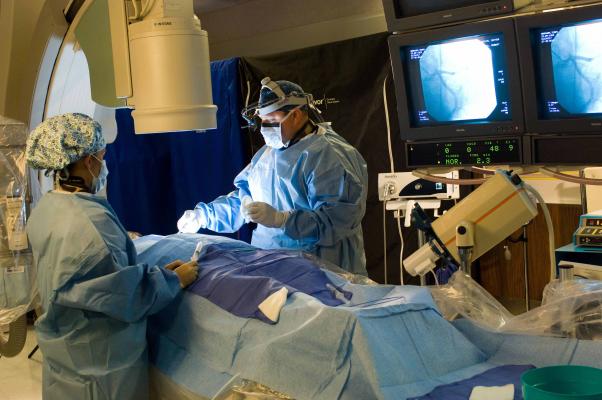
April 19, 2016 — A large randomized controlled trial of ischemic postconditioning in patients who had experienced ST-segment elevation myocardial infarction (STEMI) failed to show the procedure significantly reduces death from any cause or hospitalization for heart failure. Data from the trial was presented at the American College of Cardiology’s 65th Annual Scientific Session, April 2-4 in Chicago.
STEMI is a severe form of heart attack caused by prolonged blockage of blood supply in the heart. It requires immediate angioplasty, a non-surgical procedure in which a balloon is fed into the blood vessels through a catheter and inflated to open narrowed or blocked arteries, allowing blood to flow. A stent is often placed at the blockage site to keep the artery open.
In the United States, about 250,000 people experience a STEMI every year.
Ischemic postconditioning is a variation on angioplasty that involves using 30-second bursts of blood flow interspersed with 30-second pauses to restore blood flow to the heart.
“Abrupt reperfusion by angioplasty may itself damage the heart muscle,” said Thomas Engstrøm, M.D., Ph.D., of Rigshospitalet University of Copenhagen, Denmark, and lead author of the study. “The thinking was that performing the reperfusion in a gentle, graded fashion would protect the heart against reperfusion injury.”
Studies suggest that up to 35 percent of patients may experience reperfusion injury during angioplasty, he said.
Earlier studies in STEMI patients showed that ischemic postconditioning improved ST-segment resolution — an important marker of arterial blockage on electrocardiogram — reduced damage to heart muscle, and in some patients limited the extent of reperfusion injury. It was unclear, however, whether these improvements ultimately reduced hospitalizations or improved patient survival.
The DANAMI-3 iPOST trial, which took place in Denmark, included 1,234 patients (average age 61; 79 percent male) with acute STEMI symptoms of less than 12 hours’ duration who were randomly assigned to receive standard angioplasty or ischemic postconditioning prior to stent implantation in the blocked artery. The primary endpoint was a composite of death from any cause and hospitalization for heart failure. Patients were followed for a minimum of two years, with an average follow-up time of 39 months.
Deaths from any cause and hospitalizations for heart failure — the primary endpoint — were reduced by 7 percent in patients who received iPOST compared with those who received standard angioplasty, but this result did not reach statistical significance, Engstrøm said. Although the primary endpoint was not met, a statistically significant 4 percent improvement was seen in a secondary endpoint, left ventricular ejection fraction — a measure of how much blood is being pumped out of the left ventricle — in patients whose STEMIs involved the front wall of the left ventricle (the heart’s main pumping chamber), he said.
“This may translate into improved survival over more years of follow-up,” Engstrøm said.
This study was the first large clinical trial designed to evaluate clinical outcomes in STEMI patients, as opposed to surrogate endpoints such as ST-segment resolution, Engstrøm said. He said larger trials may be required to definitely establish whether ischemic postconditioning improves clinical outcomes.
A limitation of the study is that the physicians performing the angioplasties cannot be blinded to the treatment group that patients are assigned to, Engstrøm said.
The DANAMI-3 iPOST trial was funded by the Danish Agency for Science, Technology and Innovation and Danish Council for Strategic Research.
For more information: www.acc.org


 December 20, 2023
December 20, 2023 








